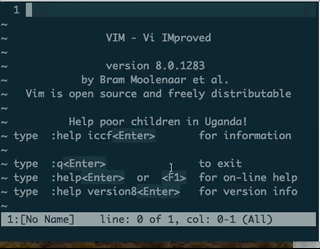

So, it IS possible to remap a keyboard shortcut for the command from the VS Code Keyboard Shortcuts settings. (so, the issue is with the JUPYTER extension command, and NOT other VSCode commands).Ĭhanging the keymap for "jupyter.execSelectionInteractive" from the usual "shift+enter" in the "Keyboard Shortcuts" page of VSCode to something like "cmd+enter" (or anything), also DOES work. it's not down to an issue with the 'leader' mapping).Ĭhanging the "command" to read 'python.execSelectionInTerminal' DOES work. Notice that pressing the combination does not send the code to be executed in the interactive terminal.Ĭhanging the "before" keymap, doesn't make a difference. "command": "jupyter.execSelectionInteractive", (specifically, execSelectionInteractive). Placing the ! at the beginning of the command has a different meaning.įor example, one can mistype :!q instead of :q! and vim would terminate with a 127 error.Īn easy way to remember this is to think of ! as a way of insisting on executing something.Does this issue occur when all extensions are disabled?: YesĬurrently, VS Code does not enable you to map a Vim keymap to a Jupyter extension command. The ! keystroke is sometimes used at the end of a command to force its execution, which allows to discard changes in the case of :q!. Shortcuts not starting with : such as ZZ and ZQ refer to Normal mode key mappings. The command q is an abbreviation of quit, w, of write and x, of exit (you can also type :quit, :write and :exit if you want). The : keystroke actually opens Command mode. If you have opened Vim without specifying a file and you want to save that file before exiting, you will receive E32: No file name message. :qa! Enter - quit without saving (discard changes in any unsaved files).:qa Enter - try to quit, but stop if there are any unsaved files.If there are buffers without a file name or which cannot be written for another reason, Vim will not quit :xa! Enter - Write all changed buffers, even the ones that are readonly, and exit Vim.If there are buffers without a file name, which are readonly or which cannot be written for another reason, Vim will not quit :xa Enter - Write all changed buffers and exit Vim.
#VIM COMMAND E VS E WINDOWS#
For example, to write and quit all windows you can use: To close multiple buffers at once (even in multiple windows and/or tabs), append the letter a to any of the Commands above (the ones starting with :). ZZ is a shortcut that does the same as :x (Save workspace and quit the editor),.:x Enter (same as :wq, but will not write if the file was not changed),.:wq Enter (shorthand for :write and :quit),.:cq Enter quit and return error (discard all changes so the compiler will not recompile this file).ZQ is a shortcut that does the same as :q!,.



 0 kommentar(er)
0 kommentar(er)
